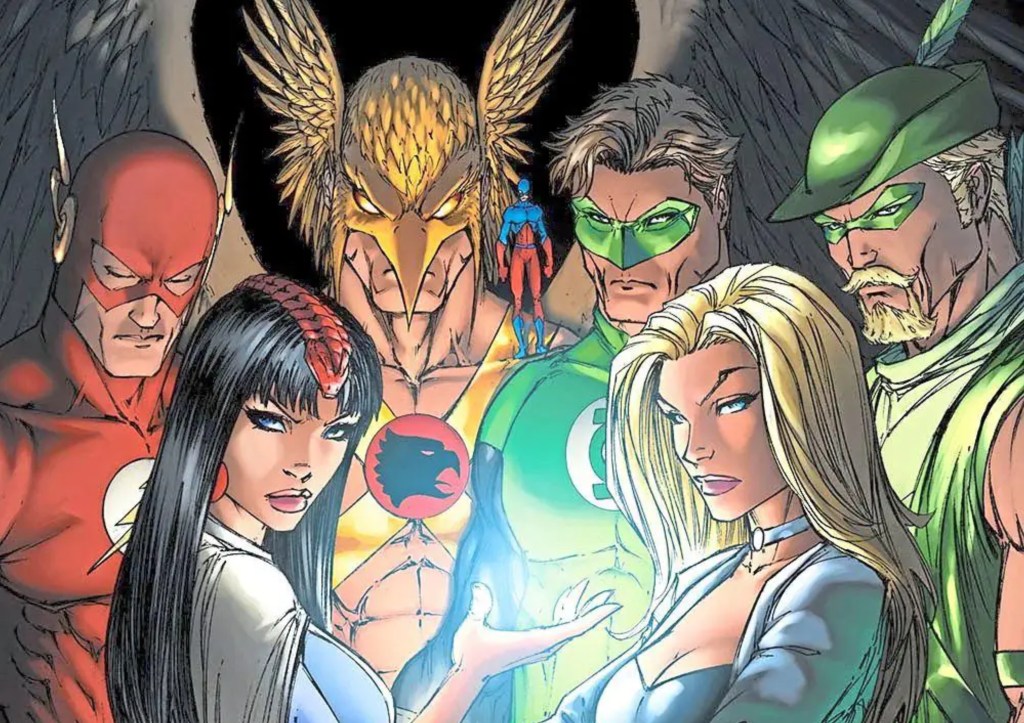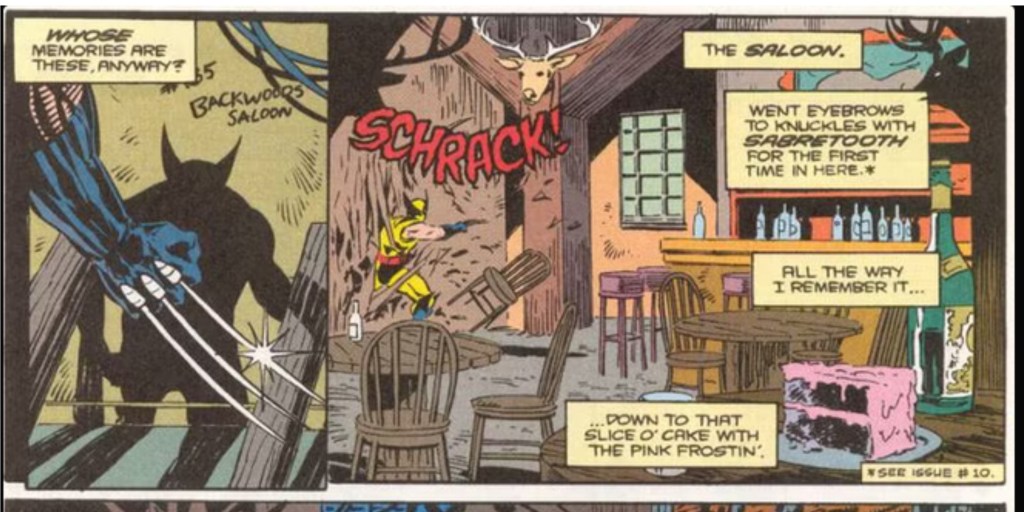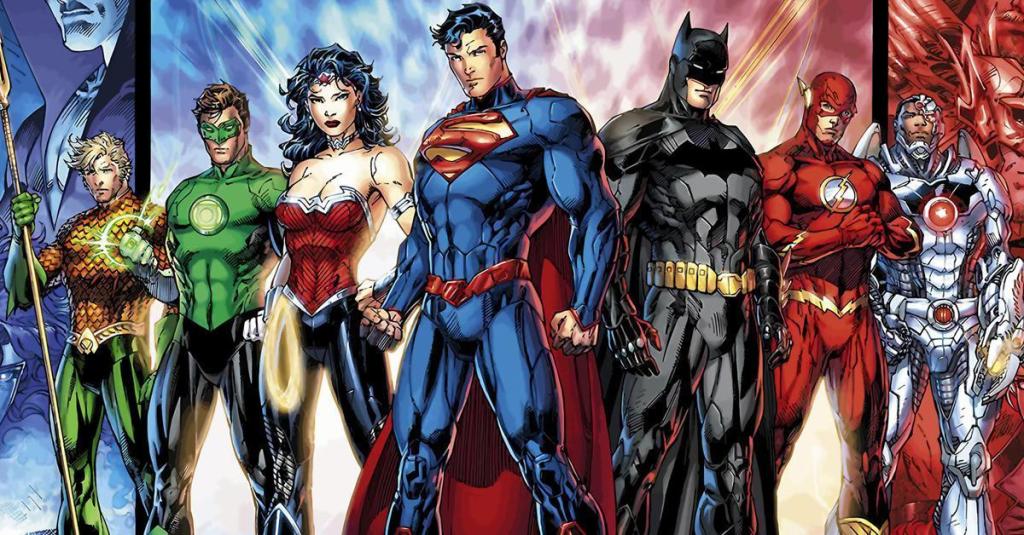Continuity is both comic book fans’ favorite thing and the bane of their existence. Marvel and DC Comics have created massive universes with histories that reach back into the far distant past and can run until the future. Fans like to have a history of events that they can point to, and that’s where continuity comes in. Marvel and DC have both used continuity in different ways, however they both use the same tool to “fix” continuity — the retcon. “Retcon” is short for retroactive continuity, and it’s been used to explain away stories like X-Men: Deadly Genesis, which took a story that everyone knew and added to it, completely changing the history of the X-Men in the process. Retcons are deployed whenever a creator or editor has a continuity-breaking idea for a character and they need to make it work with the years of history that have been established.
Videos by ComicBook.com
Retcons are a double-edged sword for fans. Everyone has their favorite retcons, ideas that they feel make the characters they love better. They also have the retcons that they hate the most, ones that all of them point to as moments when characters or concepts where ruined. As always, this sort of thing is highly subjective, but there are some retcons that have gone down as terrible for many fans. These sevens retcons are the worst of the worst, having ruined titles and publishing lines with their changes.
7) Apocalypse’s Past with Arakko

Apocalypse is one of the most important villains in the X-Men mythos. The ancient Egyptian mutant has played a huge role in the history of the Earth, his survival of the fittest ethos seeing him pit mutants against mutants or humans or other superhumans, creating servants that are the most formidable and enhancing his already substantial powers. Readers have learned a lot about Apocalypse over the years, but the latest retcon to his origin has done irreparable damage to the character and the stories he’d been in before. Apocalypse was revealed to have been acquainted with Okkara, the mutant continent that would split into Krakoa and Arakko. It’s revealed that Apocalypse joined this ancient mutant nation, marrying a mutant named Genesis, who helped him come up with his Darwinist ethos; in fact, she was much more into that sort of thing than he was. The attack of the demonic hordes of Amenth broke Okkara in two, and it was revealed that Apocalypse promised his wife that he would create an army powerful enough to defeat Amenth when it tried to invade the Earth again. This retcon has made it so Apocalypse’s actions over the millennia have been somewhat altruistic. There’s no reason why he wouldn’t have told anyone about the truth about Okkara, Krakoa, and Arakko. It makes him seem kind of stupid, and hurts every Apocalypse story that came before, because at the very least, he could have told everyone why and prevented a lot of problems.
6) The John Byrne Superman Reboot

Crisis on Infinite Earths created some of the best retcons in the history of comics. Some people would argue over whether a reboot like Crisis counts as a retcon, but seeing as how both revolve around changing a character’s history, I’m going to count them as the same thing for this list. An interesting aspect of the post-Crisis reboot is John Byrne’s Superman. Byrne was given the job of recreating the Superman mythos for the ’80s, and he created a Superman that was entirely different from the original. Byrne’s Superman was the ultimate Reagan era yuppie, a more conservative version of the character than what came before. Byrne made him into an All-American, taking away his status as an immigrant by having him actually be born in a birthing matrix when he came to Earth. Then, there’s the changes Byrne made to Krypton, making it into a cold, antiseptic society that worshiped science and was basically Vulcan in every way that counted. Byrne’s Superman retcons were pretty popular for a long time, but as it’s become easier to get pre-Crisis Superman comics, fans are realizing just how bad Byrne’s changes were to the character. Byrne’s Superman is an interesting example of the tides of the fandom changing, and showing how damaging bad retcons can be.
5) The Zero Hour Hawkman Retcons

Hawkman is one of the complicated DC characters of all time. Hawkman first appeared in the Golden Age, helping found the Justice Society, and disappeared when most superhero comics went the way of the dodo in the early ’50s. Hawkman would return in the Silver Age, with DC transforming him into an alien from the planet Thanagar on Earth-One, with him keeping his original history on Earth-Two. This worked out fine while there was a multiverse, but once Crisis on Infinite Earths made everything into one universe, Hawkman’s entire history had to be changed. This was an ongoing process, and basically ruined Hawkman for years of fans. Zero Hour was a mid ’90s DC event that was meant to clean up some of the messes of post-Crisis retcons. One of of its targets was Hawkman, and it ended up combining all of the various versions of Hawkman into one version. This gave him the memories of all the other Hawkmen out there, and it was just such a messy way to fix the problem. This led to the idea of the Hawkgod, a powerful avatar composed of all Hawkmen from across time and space, but none of it really worked because no one really wanted to do the work of coming up with a mechanism to make it all make sense. Creators would later come up with a way to fix Hawkman’s past, but the Zero Hour retcons weren’t that.
RELATED: Marvel and DC Need to Bring Back Amalgam Comics
4) Sue Dibny’s Sexual Assault

Identity Crisis has a very negative reputation because of its retcons to Justice League history, especially the one involving Dr. Light and Sue Dibny. Sue is killed in the first issue of the book, and it’s soon revealed that Dr. Light is the main suspect because of a previously unknown attack he made on her. Light was able to get onboard the Justice League satellite at some point in the past and sexually assaulted Sue Dibny, leading to the Justice League beating him down and mindwiping him. This retcon has gone down as monstrous, as fans have hated that Sue Dibny, a beloved character for many Justice League readers, was victimized in such a despicable act. It was meant to show that DC had “grown” up since the old days, and that it could be more “dark” and “adult” than it once was. It’s offensive treatment for one of DC’s most beloved characters, and led to the kind of ideas that would really hurt the publishers in the years to come. Sue Dibny deserved better, and so did the fans.
3) Wolverine’s Memory Implants

Wolverine was presented as the X-Men’s man of mystery, a character with a shadowy history that stretched far into the past into what appeared to be either the late 1800s or the early 1900s. However, Marvel decided that they wanted to obfuscate Wolverine’s past even more, and they used Weapon X to do that. Weapon X gave Wolverine his adamantium skeleton, and made him into a killing machine. However, that wasn’t all that Weapon X did to Wolverine. It also implanted false memories in the minds of Wolverine and other Weapon X subjects. They did this in a variety of ways, including using a soundstage to create the memories like scenes from a movie or TV show. This was a very, very bad retcon. It was meant to make it so that a creator could invalidate any moment from Wolverine’s past at any time. They can just reveal that it was a memory implant, and be done with it. Sometimes, retcons add something to a character, but this is the exact opposite of that. The Weapon X memory implant retcon was just a way to subtract things from Wolverine’s life, and it’s always a bad idea to do that sort of thing.
2) The New 52 Retcons. All of Them.

DC has had a lot of success over the years with their continuity reboots. Crisis on Infinite Earths made DC more popular than before, allowing it to compete with Marvel for the first time in years. DC learned the wrong lesson from Crisis on Infinite Earths; instead of realizing that the reboot was successful because of the planning that went into making it all work — literal years of work from every creator and editor at DC — and not just the fact that people got excited by the reboot. The New 52 reboot was a total mistake, but not just because it was a reboot. It was because DC decided to do with it very little planning, almost on a whim it seemed. However, DC also revealed that the New 52 wasn’t technically a full reboot, and that lots of things from the DC Universe that everyone knew would carry over. This was the truth, but the problem comes in that no one ever really made a timelines of events for the DC Universe. The New 52 was a bunch of reboots and retcons that ruined a whole bunch of previous, more popular reboots and retcons to sell a bunch of first issues. The New 52 wanted the success, but not the work, and this doomed it to become one of the worst retcons of all time.
1) “One More Day”

“One More Day” is the worst Spider-Man story ever, all because of its history changing retcon. By now, everyone knows the story of “One More Day”, as well as the outcome, as Spider-Man gives up is marriage to save the life of Aunt May. This retcon would have a major effect on the history of Marvel. Spider-Man and Mary Jane’s marriage was a major plot thread — the two even lived as a couple at Avengers Tower, with Mary Jane also hanging out with the members of the New Avengers. Marvel tried to think it all through, revealing that Mephisto used a multiversal overlay to prune the timeline and replace the events of Earth-616 with those of another Earth, but it was such a terrible idea in general that fans didn’t care that the creators had thought of a way to make sense of it.
What do you think are the worst retcons in comics? Sound off in the comments below.








